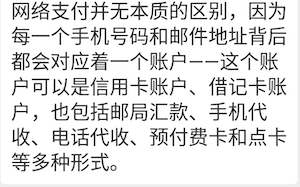中文版说明请见中文README。
Update 2019.07.25: release cnocr V1.0.0
cnocr v1.0.0 is released, which is more efficient for prediction. The new version of the model is not compatible with the previous version. So if upgrading, please download the latest model file again. See below for the details (same as before).
Main changes are:
- The new crnn model supports prediction for variable-width image files, so is more efficient for prediction.
- Support fine-tuning the existing model with specific data.
- Fix bugs,such as
train accuracyalways0. - Depended package
mxnetis upgraded from1.3.1to1.4.1.
cnocr
A python package for Chinese OCR with available trained models. So it can be used directly after installed.
The accuracy of the current crnn model is about 98.8%.
The project originates from our own (爱因互动 Ein+) internal needs. Thanks for the internal supports.
Changes
Most of the codes are adapted from crnn-mxnet-chinese-text-recognition. Much thanks to the author.
Some changes are:
- use raw MXNet CTC Loss instead of WarpCTC Loss. No more complicated installation.
- public pre-trained model for anyone. No more a-few-days training.
- add online
predictfunction and script. Easy to use.
Installation
pip install cnocrPlease use Python3 (3.4, 3.5, 3.6 should work). Python2 is not tested.
Usage
The first time cnocr is used, the model files will be downloaded automatically from
Dropbox to ~/.cnocr.
The zip file will be extracted and you can find the resulting model files in ~/.cnocr/models by default.
In case the automatic download can't perform well, you can download the zip file manually
from Baidu NetDisk with extraction code ss81, and put the zip file to ~/.cnocr. The code will do else.
Predict
Three functions are provided for prediction.
1. CnOcr.ocr(img_fp)
The function cnOcr.ocr (img_fp) can recognize texts in an image containing multiple lines of text (or single lines).
Function Description
- input parameter
img_fp: image file path; or color imagemx.nd.NDArrayornp.ndarray, with shape(height, width, 3), and the channels should be RGB formatted. - return:
List(List(Char)), such as:[['第', '一', '行'], ['第', '二', '行'], ['第', '三', '行']].
Use Case
from cnocr import CnOcr
ocr = CnOcr()
res = ocr.ocr('examples/multi-line_cn1.png')
print("Predicted Chars:", res)or:
import mxnet as mx
from cnocr import CnOcr
ocr = CnOcr()
img_fp = 'examples/multi-line_cn1.png'
img = mx.image.imread(img_fp, 1)
res = ocr.ocr(img)
print("Predicted Chars:", res)The previous codes can recognize texts in the image file examples/multi-line_cn1.png:
The OCR results shoule be:
Predicted Chars: [['网', '络', '支', '付', '并', '无', '本', '质', '的', '区', '别', ',', '因', '为'],
['每', '一', '个', '手', '机', '号', '码', '和', '邮', '件', '地', '址', '背', '后'],
['都', '会', '对', '应', '着', '一', '个', '账', '户', '一', '―', '这', '个', '账'],
['户', '可', '以', '是', '信', '用', '卡', '账', '户', '、', '借', '记', '卡', '账'],
['户', ',', '也', '包', '括', '邮', '局', '汇', '款', '、', '手', '机', '代'],
['收', '、', '电', '话', '代', '收', '、', '预', '付', '费', '卡', '和', '点', '卡'],
['等', '多', '种', '形', '式', '。']]2. CnOcr.ocr_for_single_line(img_fp)
If you know that the image you're predicting contains only one line of text, function CnOcr.ocr_for_single_line(img_fp) can be used instead。Compared with CnOcr.ocr(), the result of CnOcr.ocr_for_single_line() is more reliable because the process of splitting lines is not required.
Function Description
- input parameter
img_fp: image file path; or color imagemx.nd.NDArrayornp.ndarray, with shape[height, width]or[height, width, channel]. The optional channel should be1(gray image) or3(color image). - return:
List(Char), such as:['你', '好'].
Use Case:
from cnocr import CnOcr
ocr = CnOcr()
res = ocr.ocr_for_single_line('examples/rand_cn1.png')
print("Predicted Chars:", res)or:
import mxnet as mx
from cnocr import CnOcr
ocr = CnOcr()
img_fp = 'examples/rand_cn1.png'
img = mx.image.imread(img_fp, 1)
res = ocr.ocr_for_single_line(img)
print("Predicted Chars:", res)The previous codes can recognize texts in the image file examples/rand_cn1.png:
The OCR results shoule be:
Predicted Chars: ['笠', '淡', '嘿', '骅', '谧', '鼎', '臭', '姚', '歼', '蠢', '驼', '耳', '裔', '挝', '涯', '狗', '蒽', '子', '犷'] 3. CnOcr.ocr_for_single_lines(img_list)
Function CnOcr.ocr_for_single_lines(img_list) can predict a number of single-line-text image arrays batchly. Actually CnOcr.ocr(img_fp) and CnOcr.ocr_for_single_line(img_fp) both invoke CnOcr.ocr_for_single_lines(img_list) internally.
Function Description
- input parameter
img_list: list of images, in which each element should be a line image array, with typemx.nd.NDArrayornp.ndarray. Each element should be a tensor with values ranging from0to255, and with shape[height, width]or[height, width, channel]. The optional channel should be1(gray image) or3(color image). - return:
List(List(Char)), such as:[['第', '一', '行'], ['第', '二', '行'], ['第', '三', '行']].
Use Case:
import mxnet as mx
from cnocr import CnOcr
ocr = CnOcr()
img_fp = 'examples/multi-line_cn1.png'
img = mx.image.imread(img_fp, 1).asnumpy()
line_imgs = line_split(img, blank=True)
line_img_list = [line_img for line_img, _ in line_imgs]
res = ocr.ocr_for_single_lines(line_img_list)
print("Predicted Chars:", res)More use cases can be found at tests/test_cnocr.py.
Using the Script
python scripts/cnocr_predict.py --file examples/multi-line_cn1.png(No NECESSARY) Train
You can use the package without any train. But if you really really want to train your own models, follow this:
python scripts/cnocr_train.py --cpu 2 --num_proc 4 --loss ctc --dataset cn_ocrFine-tuning the model with specific data from existing models is also supported. Please refer to the following command:
python scripts/cnocr_train.py --cpu 2 --num_proc 4 --loss ctc --dataset cn_ocr --load_epoch 20More references can be found at scripts/run_cnocr_train.sh.
Future Work
- support multi-line-characters recognition (
Done) - crnn model supports prediction for variable-width image files (
Done) - Add Unit Tests (
Doing) - Bugfixes (
Doing) - Support space recognition (Tried, but not successful for now )
- Try other models such as DenseNet, ResNet

